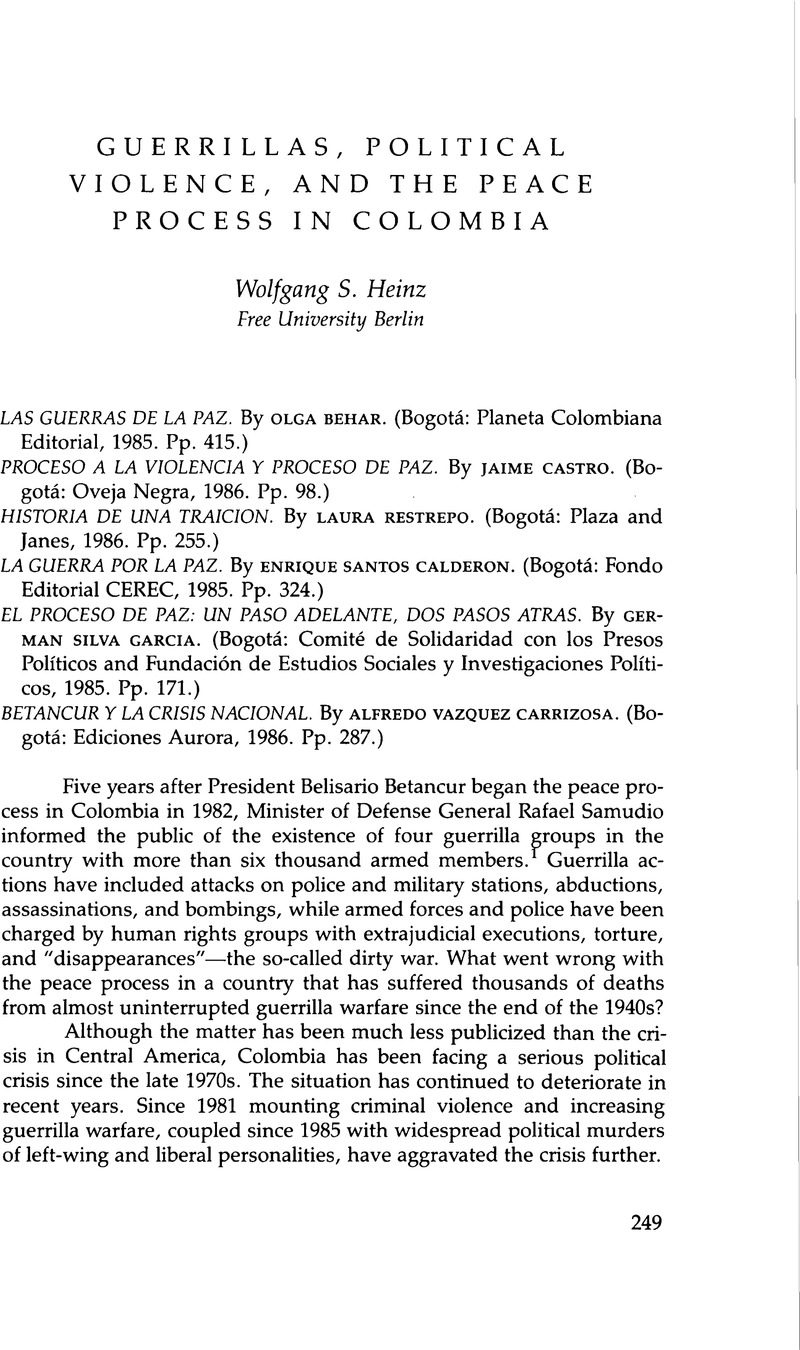Published online by Cambridge University Press: 12 October 2022

1. “Nuestra tarea se ha facilitado: min. defensa,” El Espectador (Bogotá), 12 Aug. 1987.
2. At least twenty-six journalists were murdered in the last ten years, and many others left the country because of death threats.
3. Use of the term truce is contested in Colombia, given that guerrilla groups are not recognized as armies. What is meant is a cessation of hostilities (cese de fuego).
4. The Frente Ricardo Franco of the FARC rejected the truce and continued to fight. Its leader, Javier Delgado, organized the murder of at least 160 member of his group because they were alleged to be army informers.
5. Important evidence can be found in the document from the high command of the armed forces commenting on the process and the future role of the armed forces. See Santos Calderón, La guerra por la paz, pp. 295–302. See also the analysis offered by the former defense minister, General Landazábal, on the position of the armed forces regarding the peace process in February 1983 in Landázabal's El precio de la paz (Bogotá: Planeta Colombiana Editorial, 1985), pp. 41–70.
6. “En suspenso acuerdos de la Uribe,” El Espectador, 5 Oct. 1988.
7. See Amnesty International, Colombia: A Human Rights Emergency (London: Amnesty International, 1988). Criticisms by the human rights group were rejected by both the government and the military.